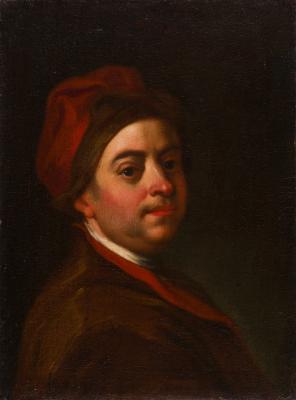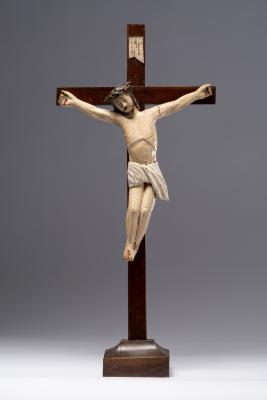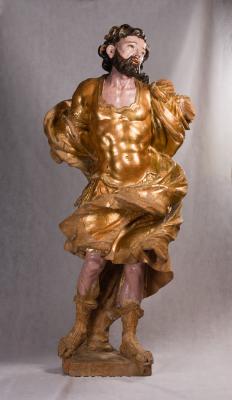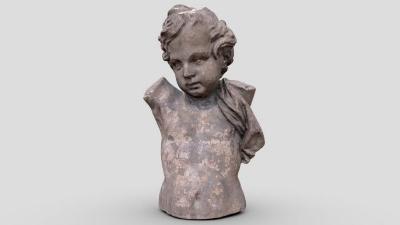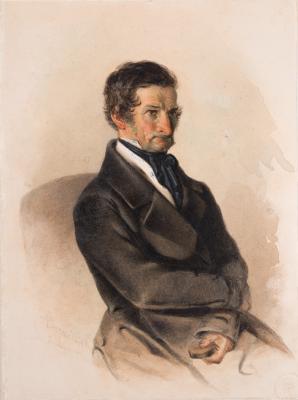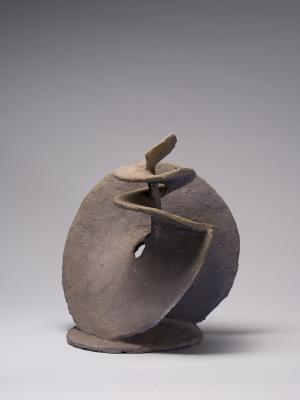The plot of the painting reveals the parable that Christ told when asked who should be loved as his neighbour. The story is about a man who was attacked while travelling from Jerusalem to Jericho, robbed, and left injured on the road. A priest and a Levite passed by but did nothing to help him. Only a Samaritan stopped and bandaged the man's wounds, put him on his mule, took him to an inn, and left money for his care. In the foreground, Bencovich depicted when the Samaritan dressed the man's wounds. A landscape showing a Levite and a priest unfolds in the background. The use of light and shadow contrasts and a cold colour palette inherent in the artist's early works is a feature of the canvas. The painting likely was a preparatory sketch (modello) for a larger composition.













